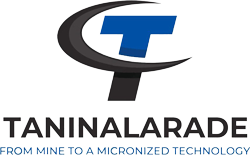The use of calcium carbonate in paint and coating industrieies
DECORATIV PAINTS:
As a functional filler, Calcium Carbonate enhances the performance of coatings. A systematic filler selection significantly influences opacity, brightness, reflectance, scrub resistance, workability, and more in decorative paints. Our products contribute to functionality and performance enhancement, formulation cost savings as well as carbon footprint reduction.
INDUSTRIAL COATINGS:
Industrial coatings are primarily used for the protection of valuable surfaces against potentially adverse environmental conditions but can also signal functions and improve aesthetics. They are typically formulated below critical pigment volume concentration and with lower filler levels. The selection of filler is still important because of the potential impact on gloss, viscosity, and durability. Along with its wide use in primers, Calcium Carbonate has become a suitable component in topcoats, where high gloss and considerable gloss retention as well as low haze are required.
IN POWDER COATINGS:
In powder coatings, binders are decisive for the physical properties of the final product. Pigments are used as tinting material. But what is the contribution of mineral fillers? Minerals fillers such as Calcium Carbonates will support creating a coating’s volume, respectively body. They can also help to adjust gloss levels, support anti-corrosion properties or simply improve coating economics.
POWDER COATINGS
Mineral fillers in plasters & renders applications are facing demanding requirements like high brightness and the right PSD to allow texturizing to meet asthetic demands or specific characteristics to achieve crack resistant products with good sanding properties. By selecting the right quantity and balance of fine and coarse mineral particles, customers can meet the requirements of operators in the field. Natural Calcium Carbonate is an ideal mineral for developing products that meet these specific requirements. The product range is available in powder or granule from as well as in slurry and offers different particle size distributions. The customer, therefore, has a wide range of options for selecting the ideal mineral filler package for any application.
PLASTERS & RENDERS
Commonly, Calcium Carbonates are used as extenders, taking over the responsibility as “white pigments” besides titanium dioxide. They allow printing of opaque white films, but also include the possibility to limit the strength of other color pigments in the system. Extenders or mineral fillers have to be carefully chosen and tuned in line with other crucial ingredients like binders, solvents or additives.
INKS:
Printing inks: In the preparation and production of printing inks, the main components are pigments, resins and solvents. The pigment that is in solid form provides the coloring power of the compound. Pigments can have an organic or inorganic source. Mineral pigments can be zinc oxide (white), lead sulfate, lead chromate and lead oxide (their mixture produces yellow, orange and red colors), iron oxide (provides yellow, red colors) and brown) pointed out. Among the organic pigments, carbon black can be mentioned, which produces black color
